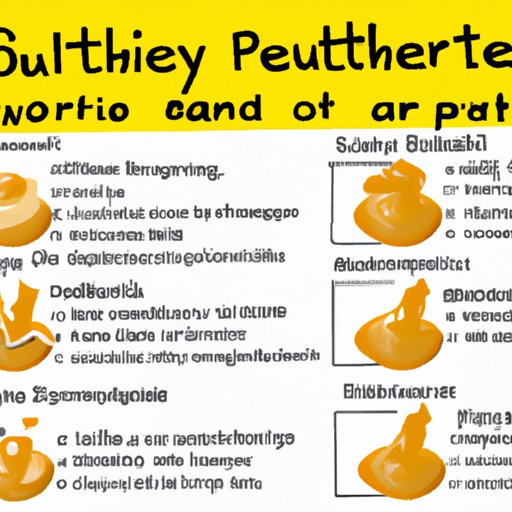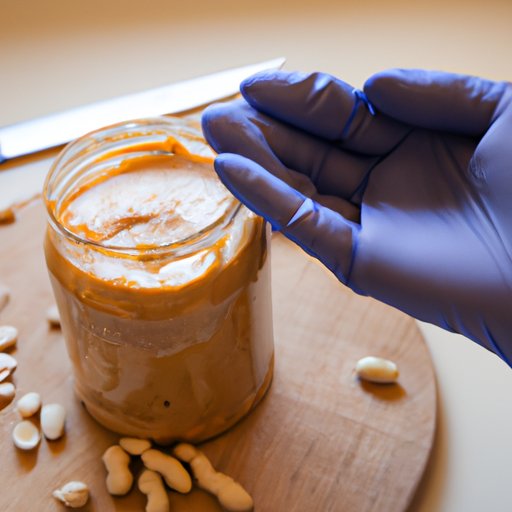Introduction
Salmonella is a type of bacteria that can cause serious foodborne illness. It is a leading cause of food-related hospitalizations and deaths in the United States. For this reason, it is important to understand how peanut butter can become contaminated with salmonella and what steps can be taken to prevent it.
Investigating the Sources of Salmonella Contamination in Peanut Butter
Peanuts are one of the most common sources of salmonella contamination. According to the Centers for Disease Control and Prevention (CDC), peanuts and peanut butter can become contaminated with salmonella if they are not properly processed, stored, or handled. Other sources of contamination include animals and their feces, water, and soil.
In addition to these potential sources, there are certain risk factors that increase the likelihood of salmonella contamination in peanut butter. These include poor hygiene practices, inadequate temperature control, and cross-contamination from other foods or surfaces.

Keeping Peanut Butter Safe from Salmonella Contamination
The best way to keep peanut butter safe from salmonella contamination is to follow good food safety practices. This includes washing hands thoroughly before and after handling food, keeping raw and cooked foods separate, and cooking foods to the proper internal temperature. Additionally, it is important to store peanut butter in a clean, dry place and ensure that it is not exposed to moisture or humidity.
Food manufacturers should also take steps to minimize the risk of salmonella contamination in peanut butter. This includes testing ingredients and finished products, implementing proper sanitation procedures, and adhering to good manufacturing practices.

Symptoms and Treatment of Salmonella Poisoning from Peanut Butter
If someone has consumed peanut butter contaminated with salmonella, they may experience symptoms such as nausea, vomiting, abdominal cramps, fever, and diarrhea. In some cases, the illness can be life-threatening. Treatment typically involves antibiotics and fluids to replace lost electrolytes.
It is important to seek medical attention if you suspect that you or someone else has consumed contaminated peanut butter. If left untreated, salmonella infection can lead to severe complications such as dehydration, sepsis, and organ failure.
How Can You Tell if Your Peanut Butter Has Been Contaminated with Salmonella?
Unfortunately, it is not always easy to tell if peanut butter has been contaminated with salmonella. The only way to know for sure is to have it tested in a laboratory. Signs of contamination may include an unusual smell or taste, a change in color, or the presence of mold.
If you suspect that your peanut butter has been contaminated with salmonella, do not eat it. Throw it away immediately and contact your local health department to report the incident.
Conclusion
Salmonella is a serious foodborne illness that can be contracted from contaminated peanut butter. To minimize the risk of salmonella contamination, it is important to follow good food safety practices and store peanut butter in a clean, dry place. If you suspect that your peanut butter has been contaminated with salmonella, do not eat it. Seek medical attention and contact your local health department to report the incident.
(Note: Is this article not meeting your expectations? Do you have knowledge or insights to share? Unlock new opportunities and expand your reach by joining our authors team. Click Registration to join us and share your expertise with our readers.)
